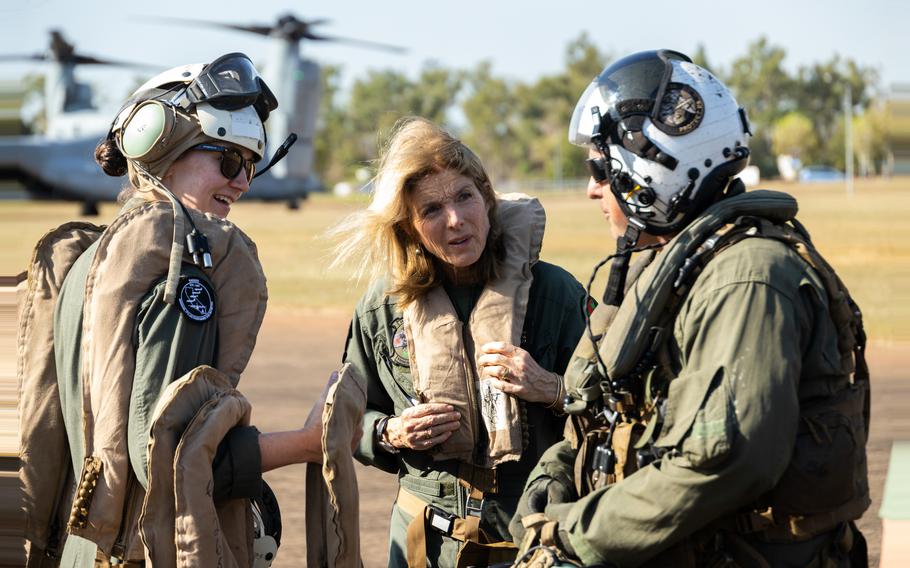
U.S. Ambassador to Australia Caroline Kennedy, center, speaks to Marine Lt. Col. Lisa Cordonnier and Staff Sgt. Jason Bradtmueller at Robertson Barracks, Northern Territory, Australia, May 17, 2023. (Sgt. Ryan Hageali/U.S. Marine Co)
U.S. Marines and Australian and Indonesian troops wrapped up three weeks of disaster relief training Wednesday in Indonesia and northern Australia, according to the Marines’ commander.
Exercise Crocodile Response was the first of several drills for Marine Rotational Force – Darwin during a seven-month training mission Down Under, Col. Brendan Sullivan, the rotational force commander, told Stars and Stripes by phone Wednesday.
During the exercise, U.S. Ambassador to Australia Caroline Kennedy flew over the Northern Territory May 17 with Sullivan in an MV-22B Osprey tiltrotor during a visit to the rotational force.
Kennedy, the daughter of President John F. Kennedy, a World War II veteran who commanded a patrol torpedo boat in the Pacific, is becoming a frequent flier. She also flew on Feb. 28 over the Australian state of Victoria in a two-seat Australian air force F/A-18F Super Hornet.
Crocodile Response “allows Australia, the US and Indonesia to cooperate effectively in times of natural disaster,” Australian navy Capt. Mitchell Livingstone, commander of the Australian Northern Command Headquarters, said in a May 16 statement.
The 2,500 Marines of the rotational force, the 12th contingent since 2012, began arriving in Darwin in March.
A force of 200 Marines, 70 Australian soldiers and 30 Indonesian troops spent the past week at the Mount Bundey Training Area, south of Darwin, practicing skills they would need coming to the aid of an island hit by a typhoon, he said.
That involved coordinating with international partners and government agencies, producing clean water, clearing transportation routes and establishing camps for displaced people, he said.
Indonesian and Australian forces do more international disaster relief than the Marines, Sullivan said, but added that such operations are the rotational force’s most likely real-world mission.
The Marines’ Osprey aircraft were essential to disaster relief training, he said. The twin-engine craft flies long distances like a conventional fixed-wing plane but hovers, ascends and descends like a helicopter.
“It creates incredible reach,” Sullivan said. “We can get to places fast with the Ospreys.”